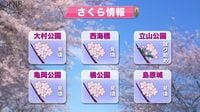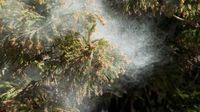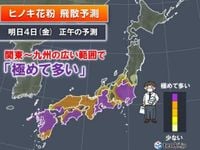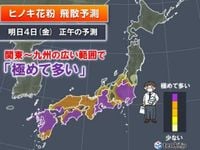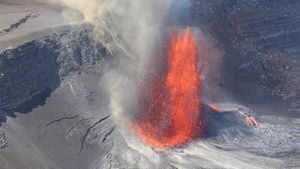This year in Tokyo, the seasonal shift in pollen has taken an unexpected turn. Typically, as cherry blossoms bloom, cedar pollen levels decline, making way for the peak of Hinoki pollen. However, due to a recent return of cold weather, the cedar pollen peak has not yet ended, leaving many allergy sufferers in a state of discomfort.
As of April 4, 2025, the pollen count in Tokyo and surrounding areas is expected to be extremely high. According to the Japan Weather Association, only about 50% of the predicted maximum cedar pollen dispersal has occurred so far this season. In fact, when compared to the predicted minimum value, the dispersal is still at about 60%. This means that a significant amount of pollen has yet to be released, and with warmer temperatures expected this weekend, the pollen count is likely to surge.
“After a few days of rain, many might have hoped that the pollen season was winding down. But the reality is that there’s still a lot of pollen yet to come,” said meteorologist Yoshihiro Mitsui from Fuji TV’s Weather Center. “We expect cedar pollen levels to remain high until the Hinoki pollen takes over, which is forecasted to peak in mid-April.”
The pollen dispersal this year began unusually early, but it took over a month to reach full-scale dispersal, defined as more than ten pollen grains per square centimeter per day. This delay is attributed to two cold waves in February and a return to cold weather around the time of cherry blossom blooming in March, which suppressed pollen dispersal.
As of April 4, areas across Japan, particularly from Kyushu to Tohoku, are experiencing high levels of Hinoki pollen. Cities such as Kagoshima, Kochi, Hiroshima, Nagoya, Tokyo, and Niigata are forecasted to have "extremely high" pollen levels. Meanwhile, Fukuoka and Osaka are expected to experience "very high" pollen levels, while Kanazawa and Sendai will see "high" levels.
Looking ahead, pollen counts are expected to remain extremely high on April 5, particularly in Hiroshima, Nagoya, Tokyo, and Sendai. However, on April 6, a slight reduction in pollen dispersal is anticipated for these areas. Yet, from April 7 onwards, pollen levels are expected to rise again significantly.
“The peak of Hinoki pollen is also delayed this year,” Mitsui added. “People with allergies should continue to take precautions, especially as the peak is expected to last longer than usual.” This means that those who suffer from Hinoki pollen allergies should remain vigilant through late April.
As the weather warms and rain subsides, the risk of high pollen counts increases. The Japan Weather Association warns that strong winds can exacerbate pollen dispersal, making it crucial for individuals with allergies to stay informed and prepared.
Even after the peak of pollen dispersal has passed, it is wise to continue monitoring pollen levels and weather conditions. Historical patterns indicate that pollen can remain a problem until the Golden Week holidays in early May. Thus, allergy sufferers are advised to keep their masks and glasses handy for the foreseeable future.
In summary, the pollen situation in Tokyo and surrounding areas remains a pressing concern for many. With the cedar pollen peak still ongoing and Hinoki pollen set to follow, individuals must stay alert and take necessary precautions to manage their allergies effectively. As the weather changes, so too will the pollen landscape, and staying informed is the best way to navigate the challenges of the season.

